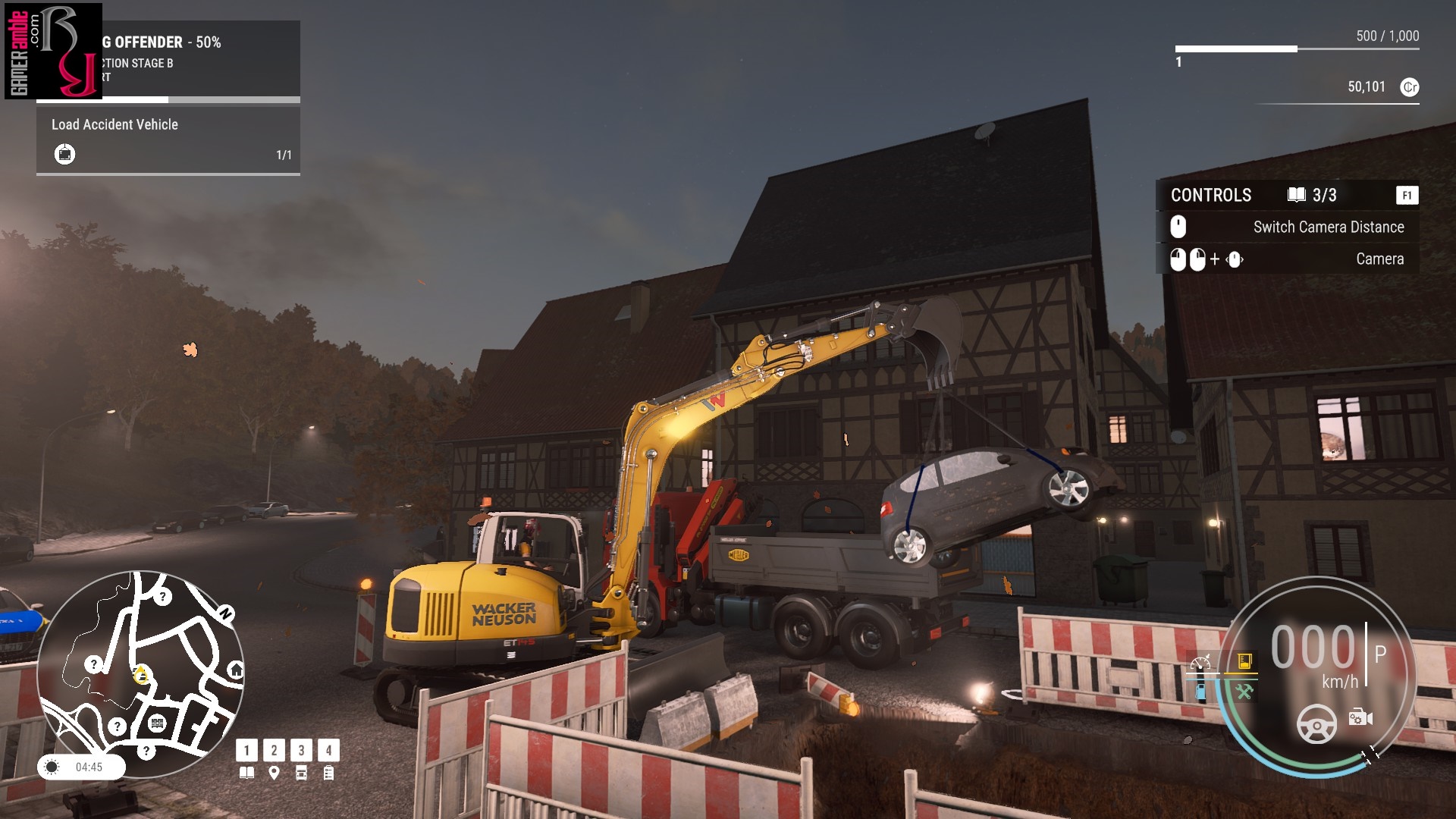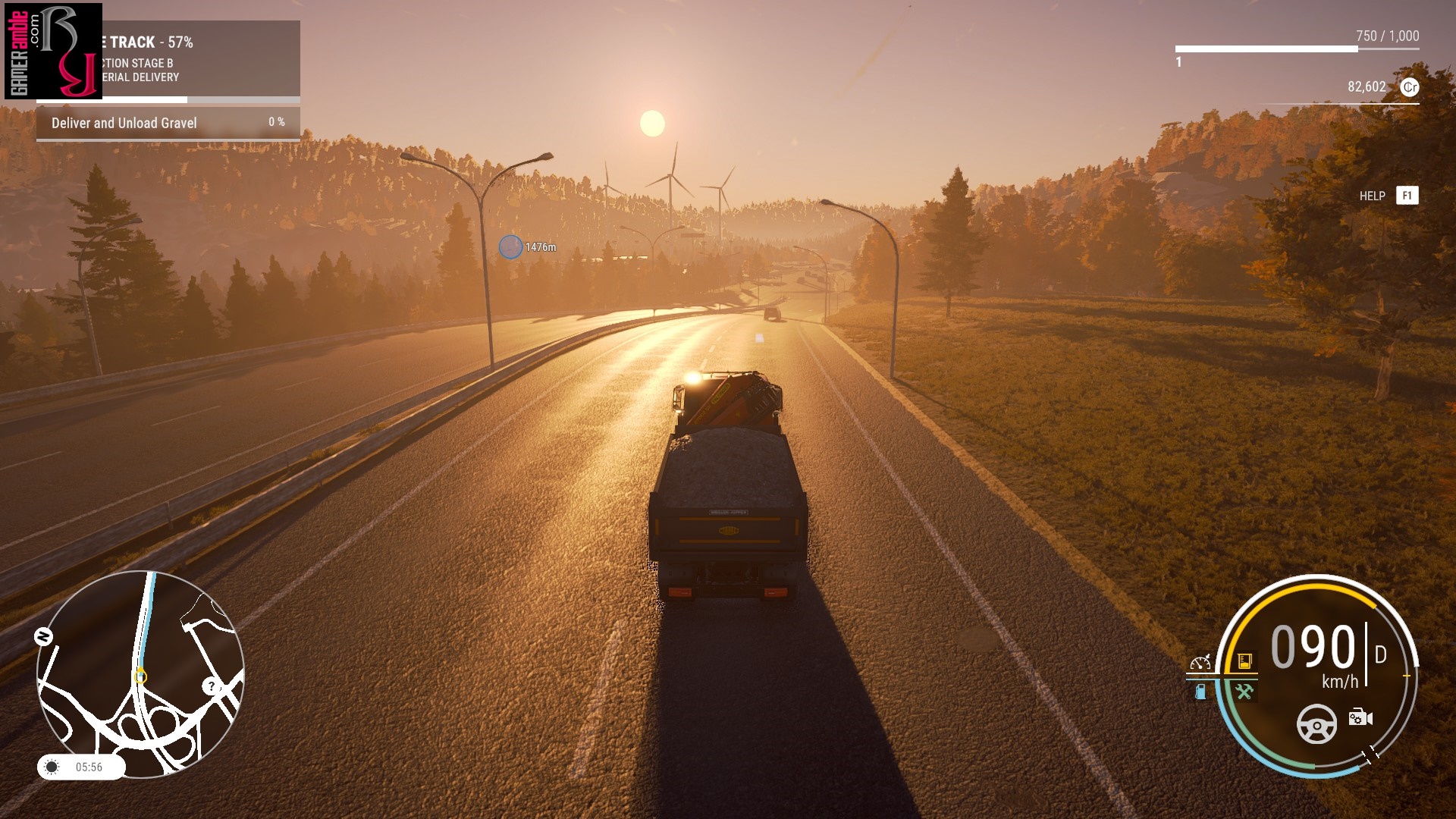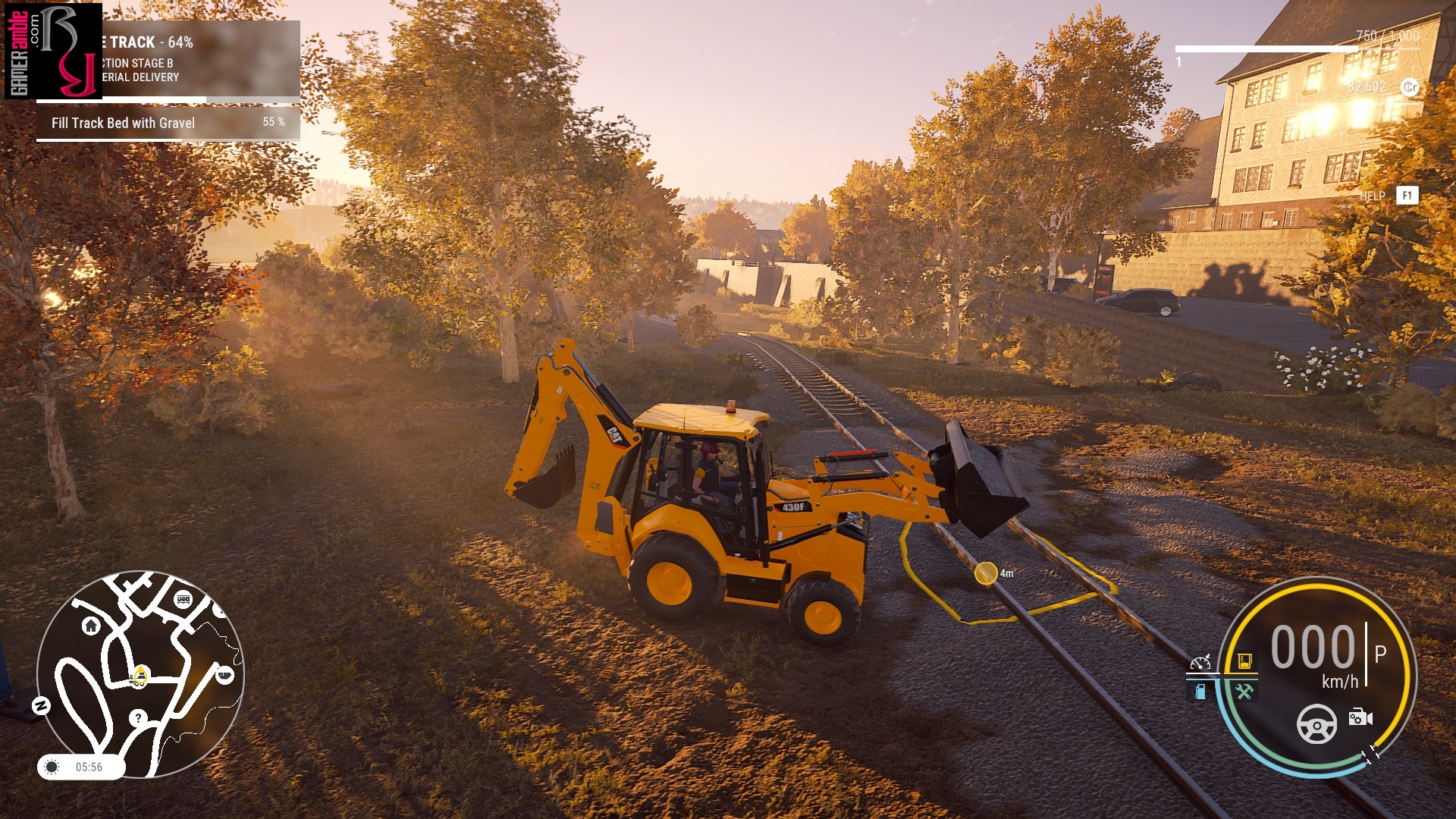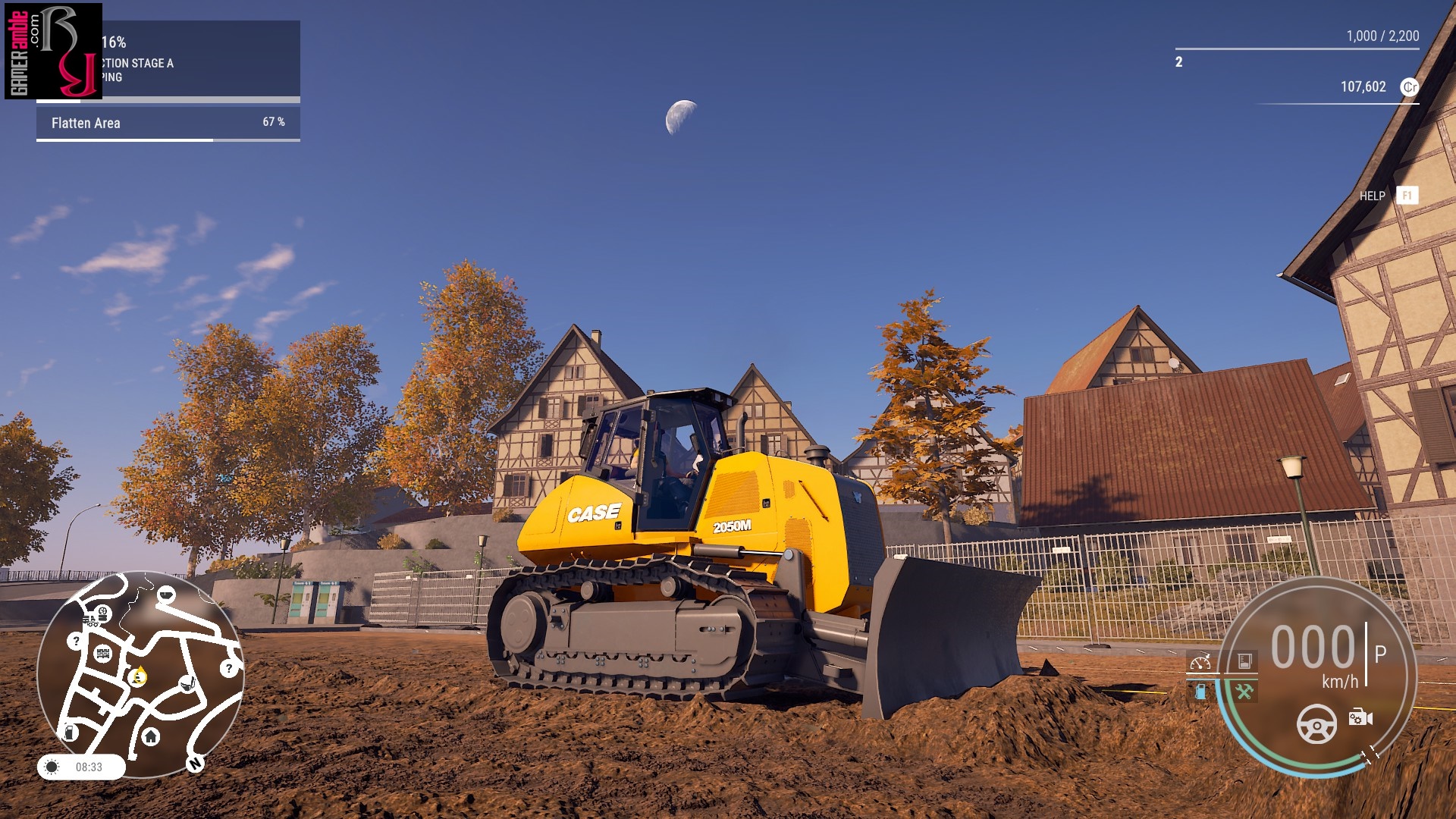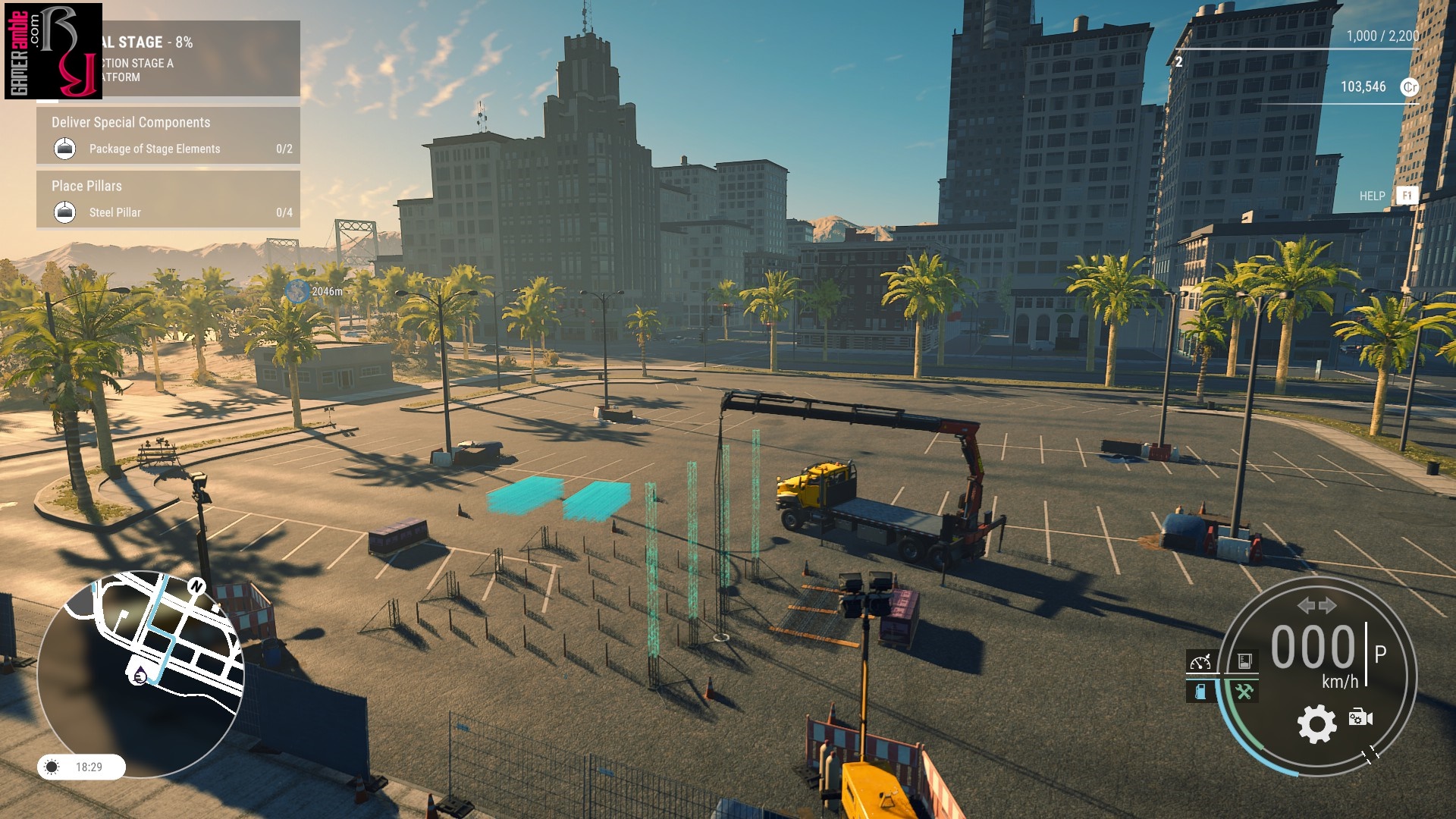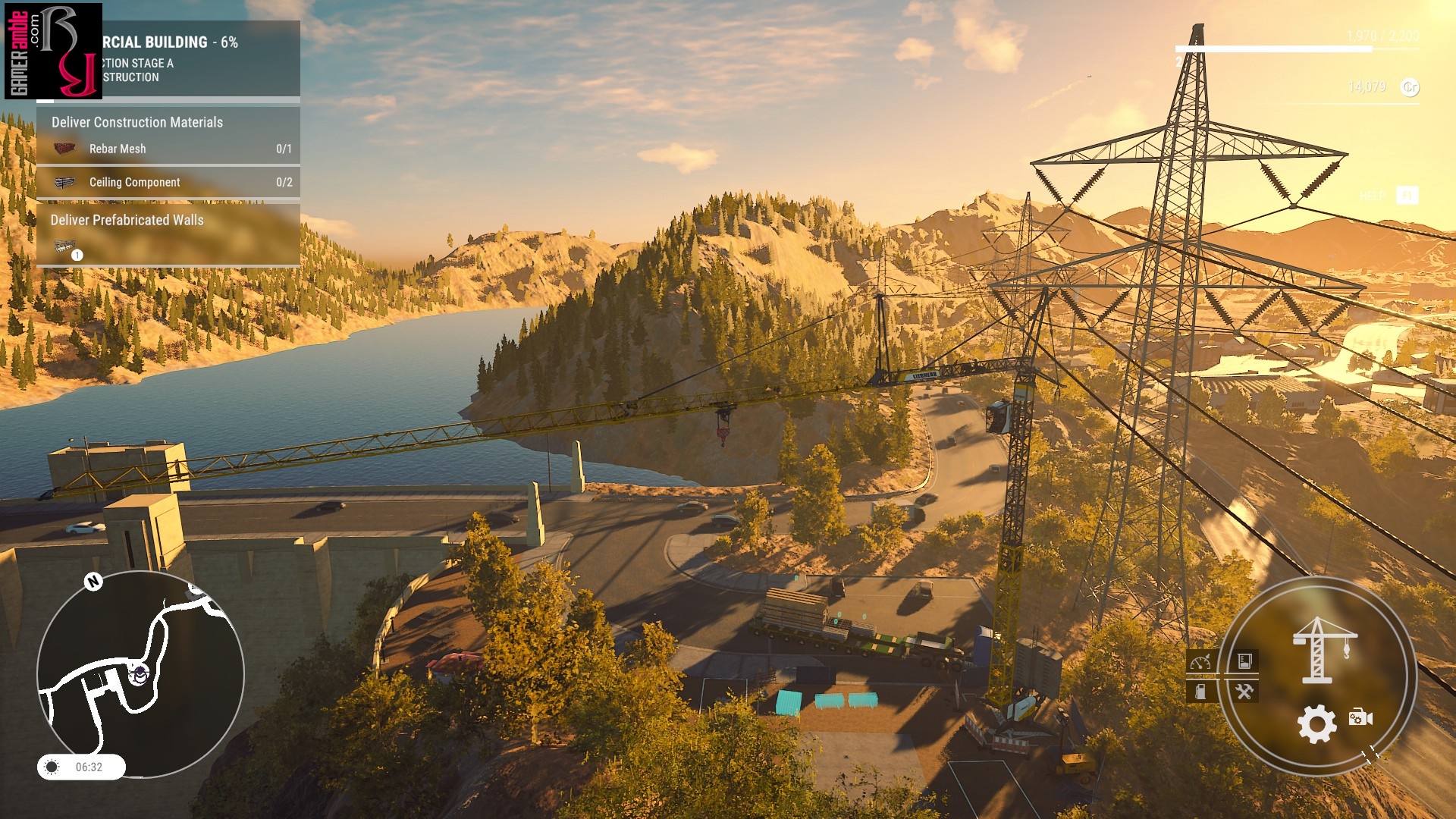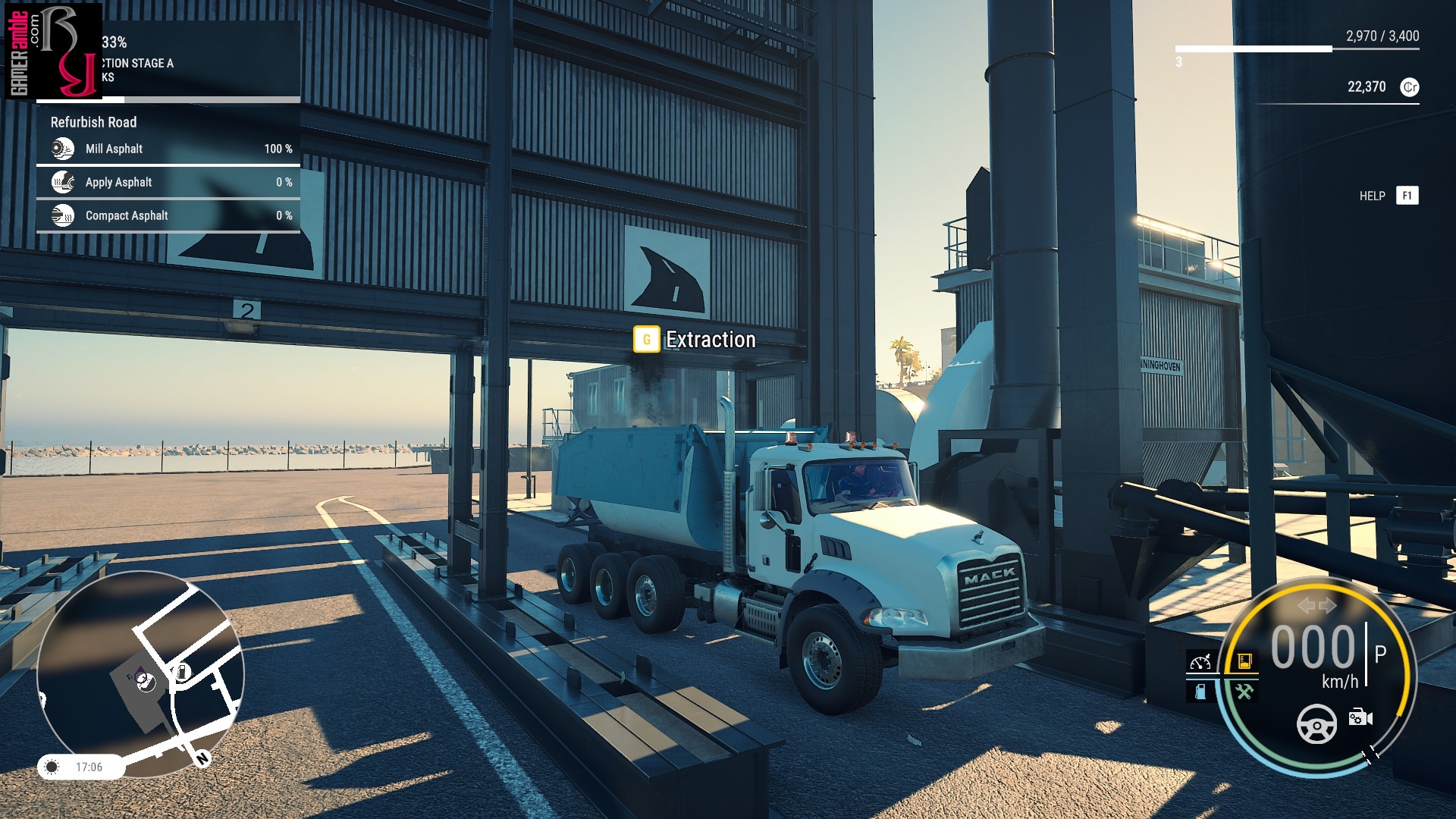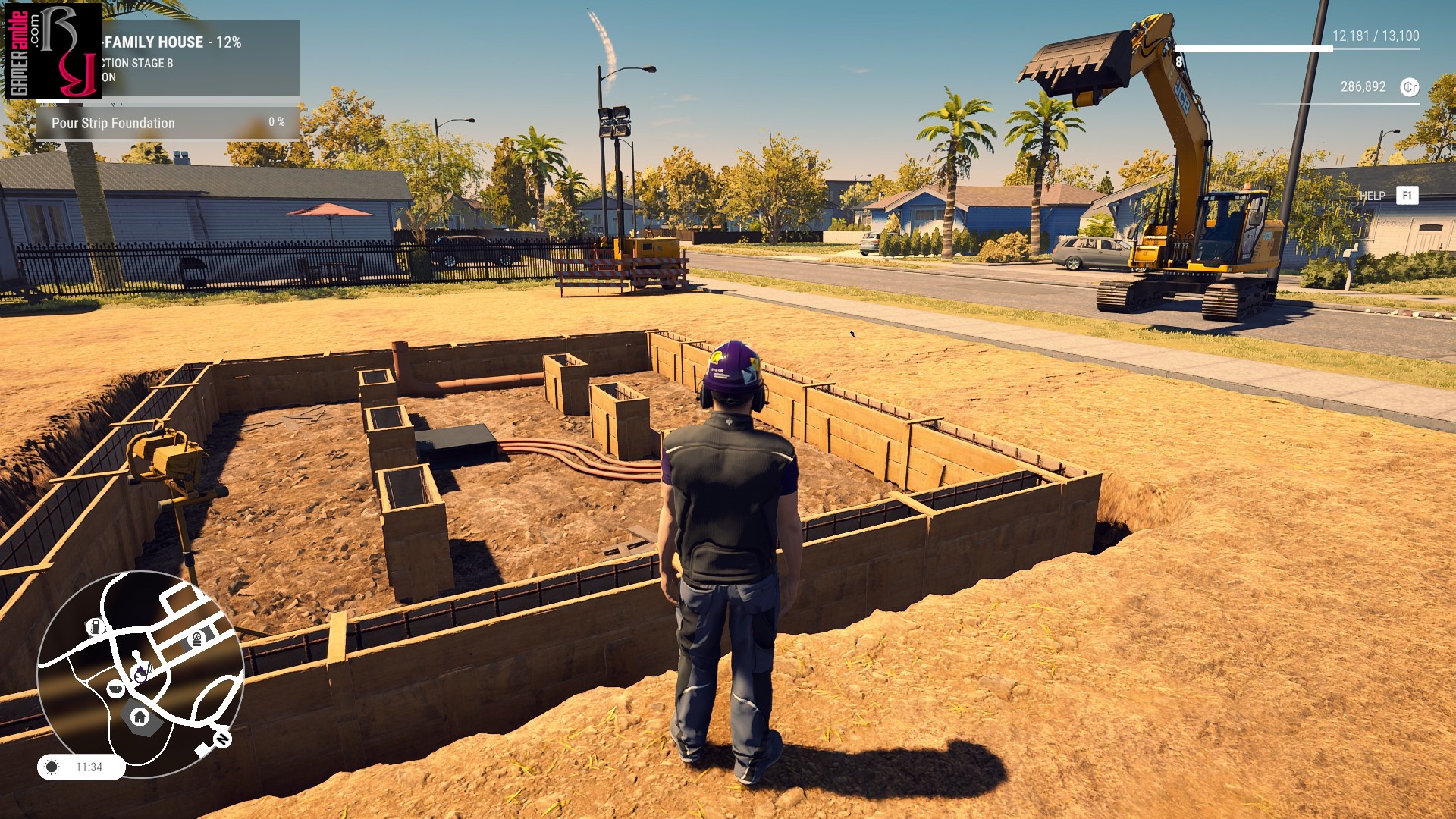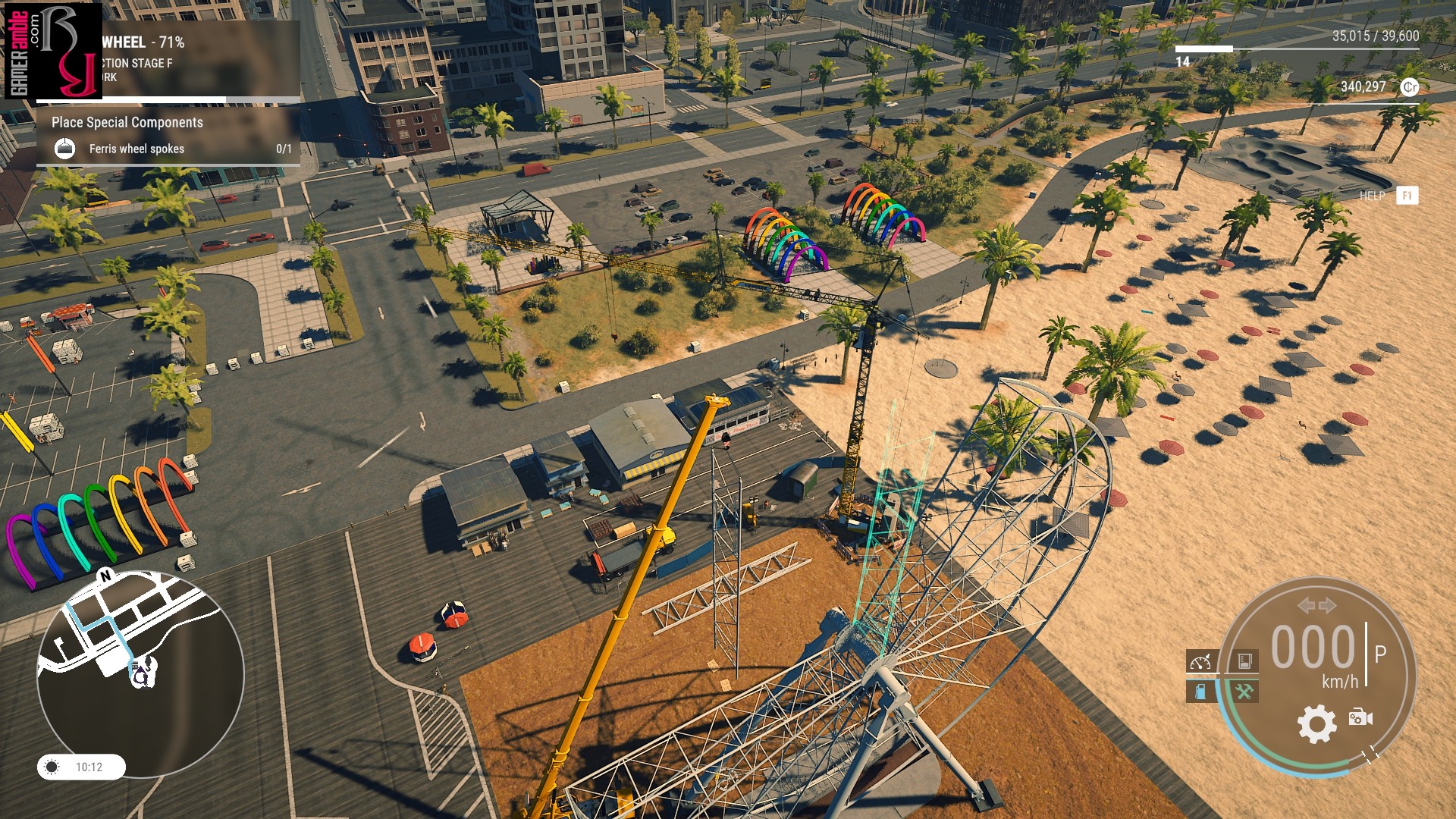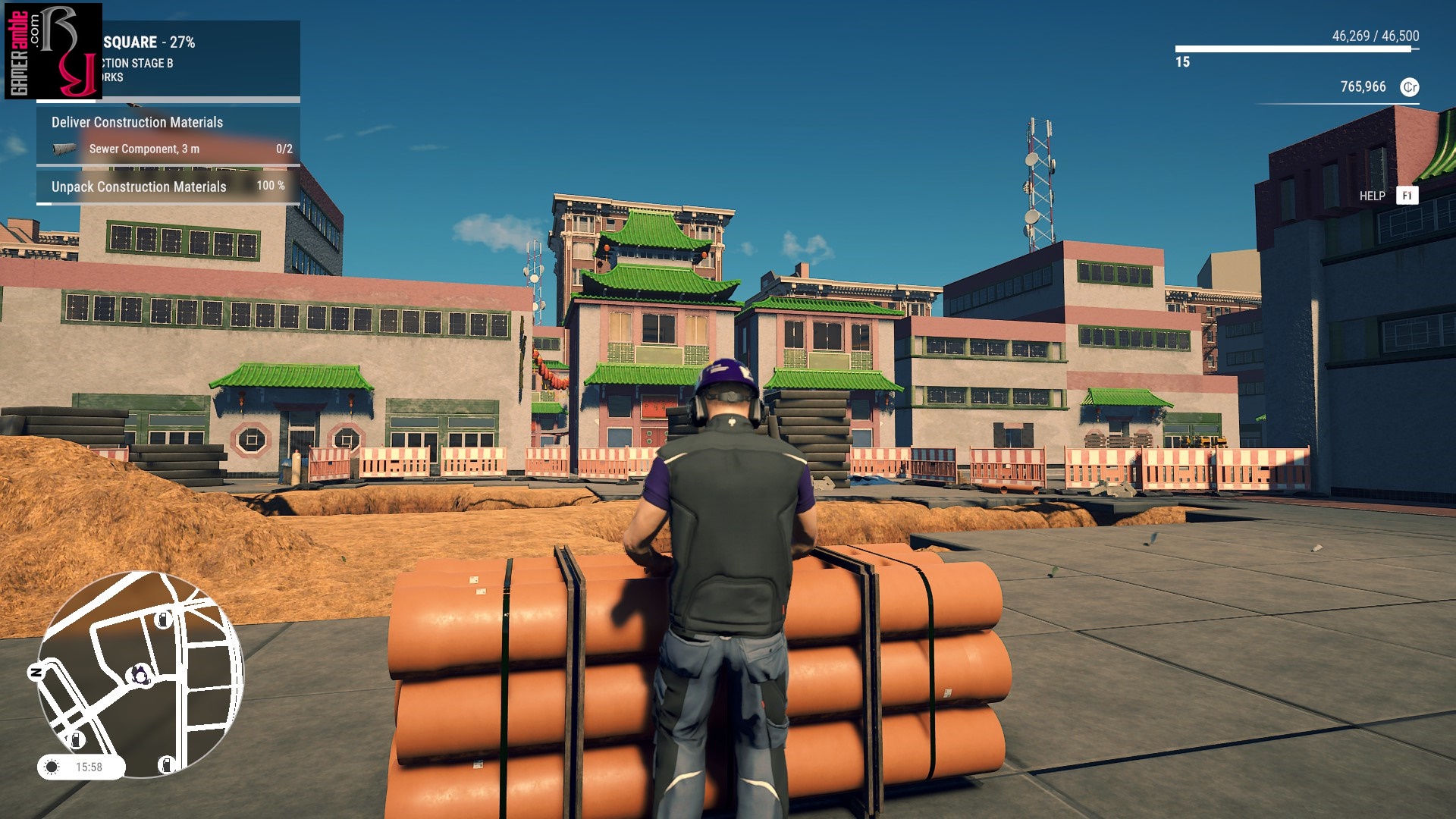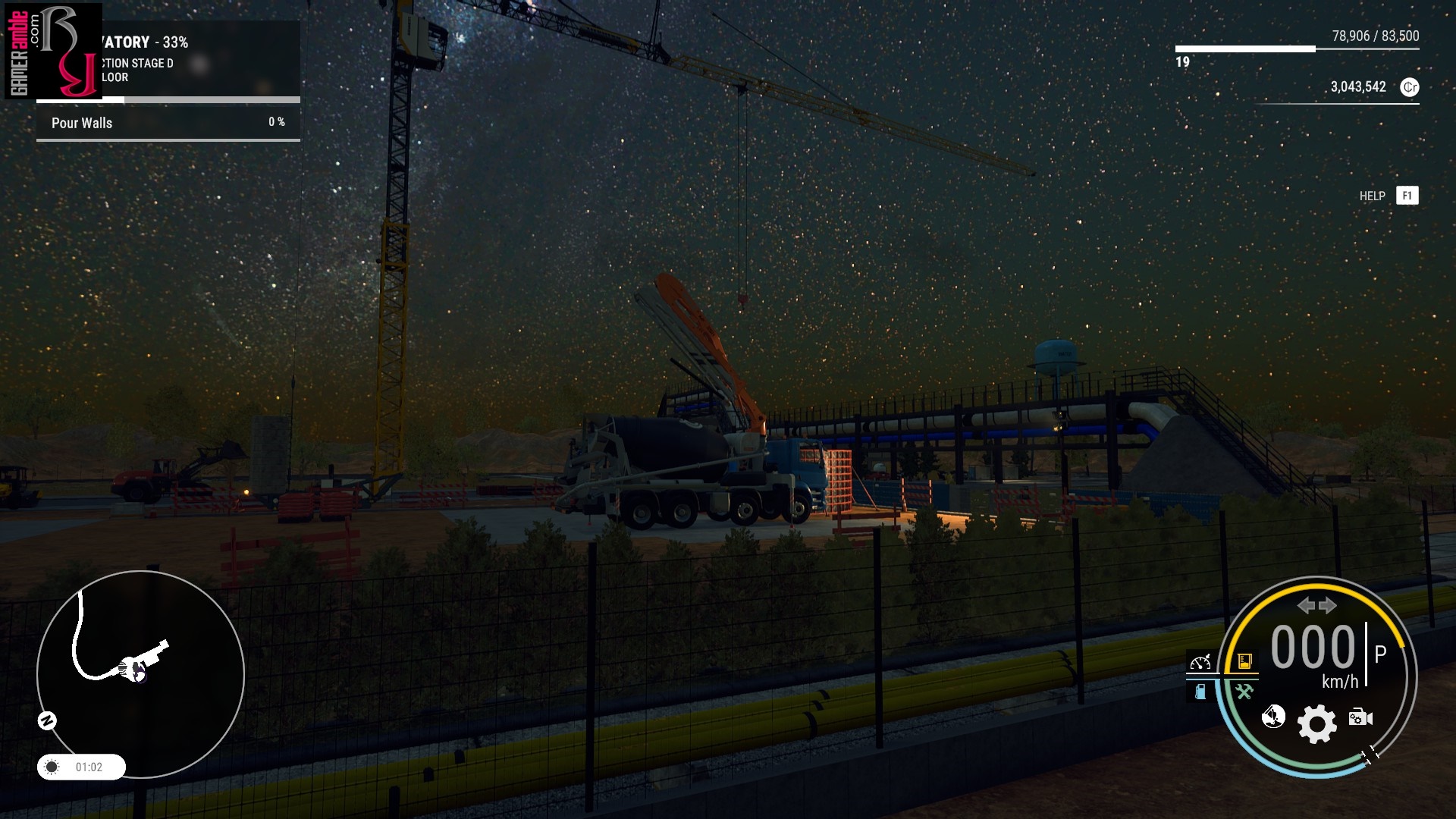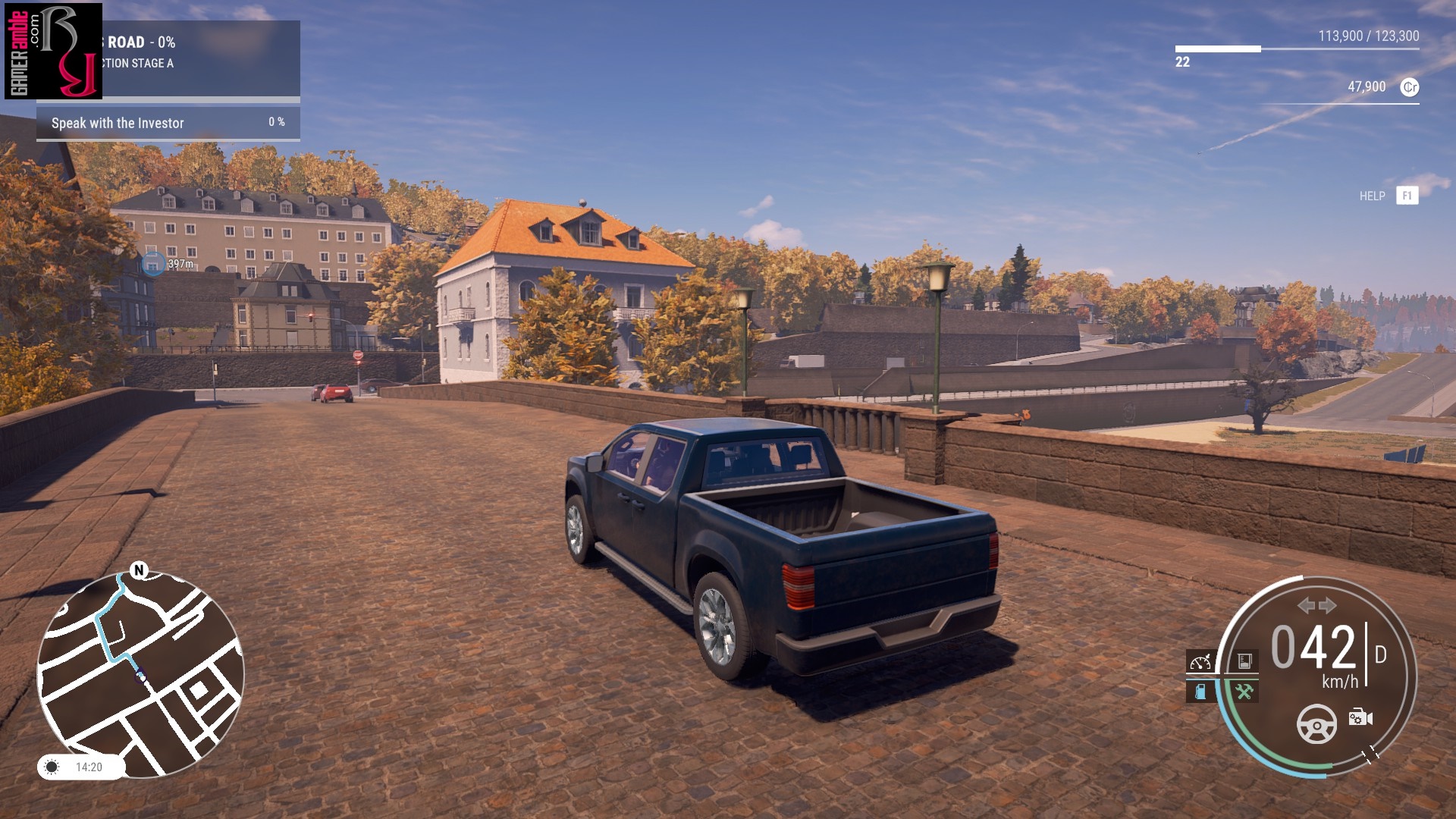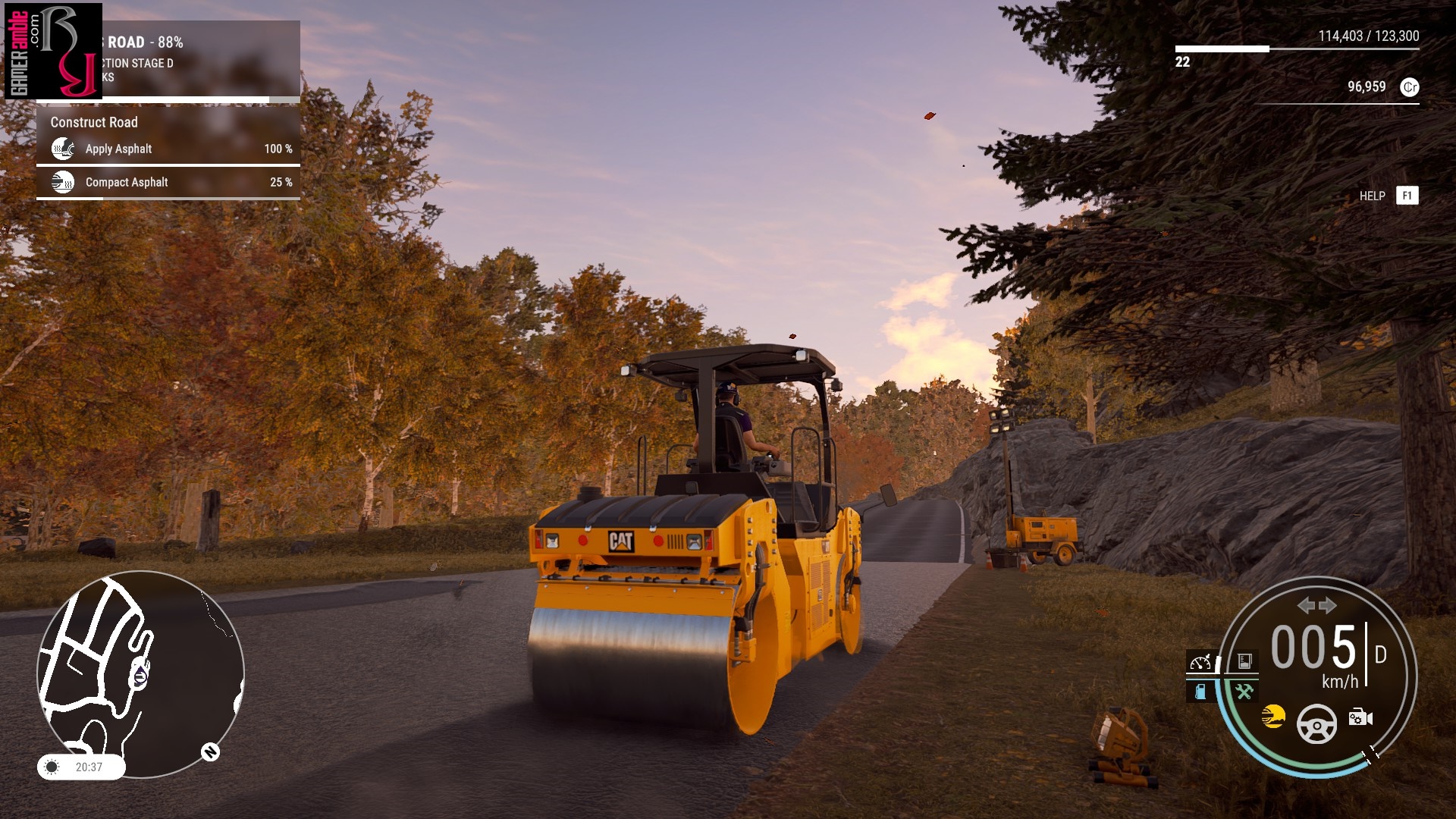Construction Simulator
Developer: weltenbauer. Software Entwicklung GmbH | Publisher: astragon Entertainment | Release Date: 2022 | Genre: Casual / Simulation | Website: Official Website | Purchase: Steam
It’s not every day that you get handed your very own construction business for free, but that’s the premise behind Construction Simulator. It seems like your old friend Hape is ready for retirement and eager for you to take the reigns of his business. Fortunately, Hape is willing to stick around to show you the ropes and there are plenty of clients in need of your services. From city officials with ambitious projects to smaller-scale side projects, there’s plenty to keep players busy in Construction Simulator.
After a basic character creation process players are presented with a choice between two huge maps. One is a European map that is inspired by the idyllic cities of Southwest Germany, while the other is set in the United States of America. Each map has its own campaign and in total there is something like 90 tasks spread across the two. The goal of Construction Simulator is to grow your company, pay off all your loans, turn a profit, and ultimately help your town to flourish. This can be accomplished by talking to the various city officials to sign up for campaign jobs, but smaller contracts can also be done on the side for some extra cash. The campaign each has its own small, self-contained story to complete in succession, but the game allows players to take their time and do things at their own pace.
Construction Simulator can be a little daunting for newcomers to the series, but the game is also very accommodating. Despite being a simulator, the game features plenty of shortcuts and tweaks that will allow everyone to have fun. There’s still a learning curve, especially when it comes to operating the various machinery, but players willing to put in the effort will soon reap the rewards. Construction Simulator veterans will recognize brands such as Caterpillar, CASE, and BELL, but the game now also features new licensed machines from the likes of DAF, Doosan, Cifa, and Nooteboom. In total, there are nine new licensed partners, which brings the total number to 25 and means that there are over 80 machines at players’ disposal.
Heavy-duty construction machinery is not cheap, but thankfully players can rent the vehicles they need for the job. This is great for completing contracts and then using the income to invest in some vehicles. Players are able to select the scope of each job too, which influences how much they get paid. This rewards players who are willing to do every step of the process with more cash, while more casual players can decrease the scope and still have fun, but not earn as much. Jobs include working on roads, parking lots, houses, house additions, transporting cargo, and much more with some jobs being country specific. For example, the European map will see players working on apartment buildings and silos or gardens while in the USA they might be required to work on swimming pools, holiday houses, or garage additions.
Before taking on a job players can see the estimated earnings as well as the number of construction stages and duration of the job, which is great to avoid overextending their budget. The current contract and next task to perform are also always shown on screen, so players are never in the dark about what to do. As mentioned earlier the scope of each job can be adjusted, but players can also skip certain steps if desired. Doing so will still require the necessary cost for building materials, but players won’t receive the rewards if they skip a step. This is great for players who might not enjoy certain tasks, such as pouring cement or using some types of machines. In fact, players who are tired of all the construction can even goof off and go searching for the 100 collectibles that dot each map. These serve no purpose other than to earn a few achievements but offer an excuse for exploring more of the maps.
Each project in Construction Simulator is broken down into specific tasks, such as disposal, unpacking, excavation, cleaning, drilling, placing prefabricated components, pouring concrete, and much more. The game typically shows outlines to indicate where objects must be placed and players can use the construction view button to see the work area, load indications, and more. There’s definitely a learning curve to every machine and some of them operate in completely different ways than others. As players complete tasks and objectives they will progress from a small to a medium and finally large company while unlocking skill points along the way. These skill points can be used on things like crane speed, concrete viscosity, fitness, asphalt capacity, and so on. It’s an interesting system and adds a bit of an RPG element to the game.
Players can use the fast travel option to reach previously visited locations, but doing so comes with a fee. Players can also transport stuff themselves or have it delivered directly to the construction site. In addition, there’s a helper function to transport and fill up materials such as gravel, sand, soil, concrete, or asphalt, but once again making use of it is 25% more expensive than driving yourself. This can cut down on frustration as the traffic in the game can cause a lot of headaches with how slow they are and how long it takes for traffic lights to change. Players can also get hit with a host of traffic offenses if they are not careful, but thankfully this feature can be disabled. The game can be played with up to three other people, which provided that they know how to cooperate and not get into each other’s way, is one of the best ways to experience the game.
Visually, Construction Simulator is a decent-looking game and the inclusion of two very different maps is a welcome one. The game features outside and cockpit views for each vehicle and the developers have not skimped on any details. Each machine is meticulously recreated and operating them from the cockpit view is quite an immersive experience. Unfortunately, other open-world games have spoiled us on things such as pedestrians as the ones features in Construction Simulator feel a little wooden, and all have very limited animations. There’s no reason to ever interact with them, but since the game allows players to move around the cities on foot it’s hard not to notice. The game does feature a day and night cycle along with neat touches such as the clouds in the sky changing over time.
The audio in the game is pretty decent too with serviceable voice-acting and a nice selection of music. The soundtrack is mostly mellow, but now and then a very energetic tune will also pop up. We found that playing with the music turned off was the most immersive as it allows players to enjoy the realistic sound effects. Of course, since the game can take many hours to complete and features plenty of repetitive tasks it is also great for listening to your own music or catching up on a few podcasts.
As Construction Simulator features so many different vehicles it can take a bit of practice to master all of them. The controls can feel a little finicky for some things, but the inclusion of a context menu for things such as changing modes or switching views is helpful. We also found that some machinery control better with the use of a dual-analog stick gamepad instead of the finger-twisting combinations needed when using a keyboard.
Overall, we really enjoyed our time with Construction Simulator even though the game can become a little repetitive after a while. The game is surprisingly accessible for newcomers, but players in search of a hardcore simulation experience might not be too pleased by some of the concessions that were made. There’s a lot of hand-holding involved when it comes to constructing buildings and it is mostly a matter of moving the indicated pieces to the right spots where they will automatically snap into place. It’s not possible to mess up a project or construct something that won’t pass health and safety standards, which could have been a cool feature. Instead, each job can feel like ticking off steps on a checklist and the end result will always be perfect. Nevertheless, the game is fun, and trying out some of the machines is quite an experience. The sheer number of things to do in the game will also keep most players busy for ages.
System Requirements
- Requires a 64-bit processor and operating system
- OS: Windows 10
- Processor: Intel Core i5-4460 3.2 GHz or AMD FX-8350 Eight-Core or comparable
- Memory: 8 GB RAM
- Graphics: Nvidia GTX 960 (4GB) or AMD Radeon Pro 570 (4GB) or comparable
- DirectX: Version 11
- Network: Broadband Internet connection
- Storage: 10 GB available space
- Requires a 64-bit processor and operating system
- OS: Windows 10
- Processor: Intel i5-10400F or AMD Ryzen 5 2600 or comparable
- Memory: 16 GB RAM
- Graphics: Nvidia GeForce GTX 1660 (6GB) or AMD Radeon RX5700 (8GB) or comparable
- DirectX: Version 11
- Network: Broadband Internet connection
- Storage: 10 GB available space
- Additional Notes: SSD Hard Drive Recommended


